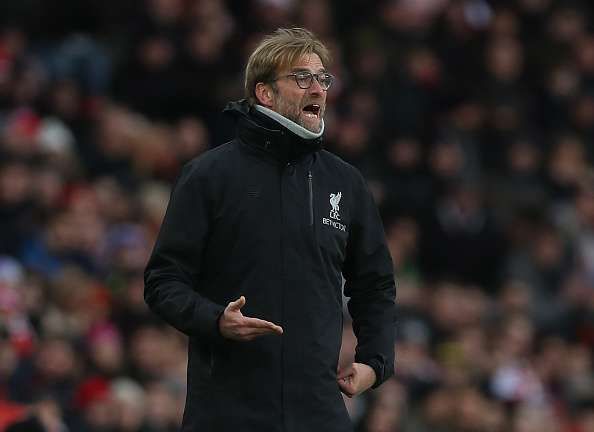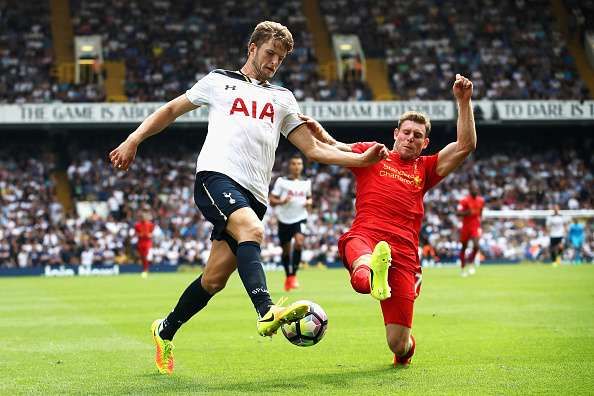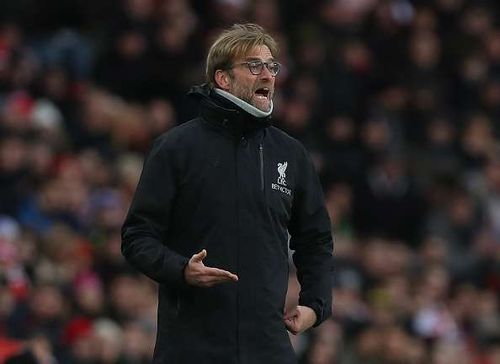
How to beat Jurgen Klopp's Liverpool - A tactical overview
Gegenpressing. We’ve marvelled at the ferocity of the style of play that Jurgen Klopp employs with Liverpool, charmed by the German twang afforded to it, and watched with slight envy (depending on club allegiances) just how taxing the style of play is on the opponent. Managers across the Premier League have tried successfully and unsuccessfully, to get around this energy-intensive style of play that Klopp and Liverpool employ.
What is gegenpressing?
A few years ago when Barcelona were fascinating the world with positionally sound, pass and move football under Pep Guardiola, one of the backbones of their success was often overlooked – an extremely good work ethic when the team was not in possession.
Guardiola had a rule for his players, that if they did not win the ball back with incessant pressing within 6 seconds of losing it, they would immediately get back into defensive shape and channel all their energies into cutting off any free spaces that the opposition had to pass the ball, thus almost always leading to a Barcelona player intercepting the ball.
Klopp’s version is a little more “heavy metal” as he himself describes it. Simply put, Klopp’s gegenpressing aims to asphyxiate the opposition players into making mistakes deep in their own half through an unrelenting pressing game. There is no 6-second rule here.
Also read: Defence is the best form of attack: Decoding the Liverpool Gegenpress under Jurgen Klopp
If either of the dangerous front three of Roberto Firmino, Sadio Mane or Philippe Coutinho are unable to dispossess the opponent, the job then falls on the midfield three of Jordan Henderson, Adam Lallana and Georginio Wijnaldum/Emre Can to carry out a similar press on the opponent’s midfield.
It is not merely a coincidence that Liverpool have allowed the lowest number of shots on their goal out of all Premier League teams this season.
Essentially, the aim is to stop an attack from building and winning the ball high in the opposition’s half, preventing them from getting into any sort of rhythm whatsoever. Once the ball is in Liverpool’s possession, they are only 2 or 3 passes away from scoring a goal. It is a mental assault as much as anything else, and often, teams have lost the game in their heads before even stepping onto the field, anticipating what a hard day’s work they are going to be in for.
So how can Klopp’s Liverpool be beaten?
Jurgen Klopp’s entire footballing aura is built on his very strong belief that anything is possible in football. Needless to say, that logic can be extended to his own team too. Liverpool are by no means undefeatable and have lost two matches so far this season to Burnley and Bournemouth.
While neither of those two defeats really build a strong case for how teams can tactically set up to beat the Reds (both matches were lost on the back of individual errors by Liverpool), there are definite clues to be found in the other matches they have played over the last two seasons.
Playing a 4-2-3-1 with two deep lying midfielders

Earlier in the season, Liverpool came away from White Hart Lane with a 1-1 draw. On that particular day, Liverpool were against an opposition that matched their intensity, work rate, and endeavour. But more importantly, Spurs were playing with two deep lying midfielders that day, Eric Dier and Victor Wanyama.
The Tottenham defence thus had two options always readily available whenever they had to pass the ball, constantly adjusting and interchanging their positions close to the defence and finding spaces.
Once the ball came into midfield, Spurs would pass the ball out wide to the wingers (left free due to Liverpool’s press) and slowly establish relatively more control on the game.
Playing with a target man
Almost looked down upon and unfashionable in this day and age of slick, fast-paced passing football, the merits of playing with a target man against Klopp’s side are underrated. Playing with a tall, strong presence in midfield or attack gives the opposition the option of virtually bypassing the entire attack and midfield in one go by sending a long ball up the field and trying to find the target man, who can then hold the ball up with his back to the goal.
Often mistaken for rough, uncut, route-one football, going long and then winning the second balls can actually prove to be a sensible tactic against Liverpool.

Playing with a target man has the added advantage of moving the entire play further up the pitch for the opposition. The team can then start playing their football in an area of the pitch that is much more dangerous and closer to Liverpool’s goal.
Speaking about this tactic, Ryan Giggs (who was the assistant to Louis van Gaal last season) said that United went in with a clear gameplan in their 1-0 victory at Anfield last season. “Louis (Van Gaal) felt that the way out of their press was to look to bypass their midfield when it was possible and that was done by going long to Marouane Fellaini.”
Going 4-3-3
In theory, mirroring Liverpool’s formation of 4-3-3 and going man for man in every part of the pitch would work against the gegenpress. This is primarily because playing two banks of 3 players in attack and midfield gives the player on the ball many more options from the favourable passing angles created by 4-3-3.
However, these players must possess extremely high levels of technique and awareness on the ball, and a willingness to work hard when not in possession. Mirroring Liverpool’s formation when they have the ball would also then ensure that no man is left free, and the attacking threat going forward can be nullified.
Parking the bus
While a legitimate tactic against the Reds, playing with two banks of four and virtually parking the bus is risky. Among the teams that have tried it and failed this season are West Bromwich Albion and Hull City at Anfield. While the plan seemed to work for a while, Liverpool’s quality in their front three proved to be too much at the end.
Also read: EPL 2016/17: Analysing Liverpool in the absence of key players
As soon as one goal goes in, the opposition is compelled to attack, which further leaves gaps in the field that can be exploited. However, Plymouth Argyle in the FA Cup and Manchester United in the Premier League earlier in the season at Anfield frustrated Liverpool’s attack to perfection, and came away with 0-0 draws.
Selecting the right profile of players in the line-up
Going horses for courses is the way to go against Liverpool. A tough game, which involves a lot of running and mobility is to be expected in a match against the Reds, and only players that can endure a heavy workload, along with possessing a quick turn of pace can really hold their own in these matches.
Players like Kante and Hazard for Chelsea would do well against Liverpool, but someone like a Cesc Fabregas might get caught out. Similarly, Silva and de Bruyne instead of Yaya Toure for Manchester City, Herrera and Pogba instead of Schweinsteiger for United, and Xhaka and Coquelin instead of Elneny for Arsenal are the kinds of players who are more suited to running the show in a match against Liverpool.

